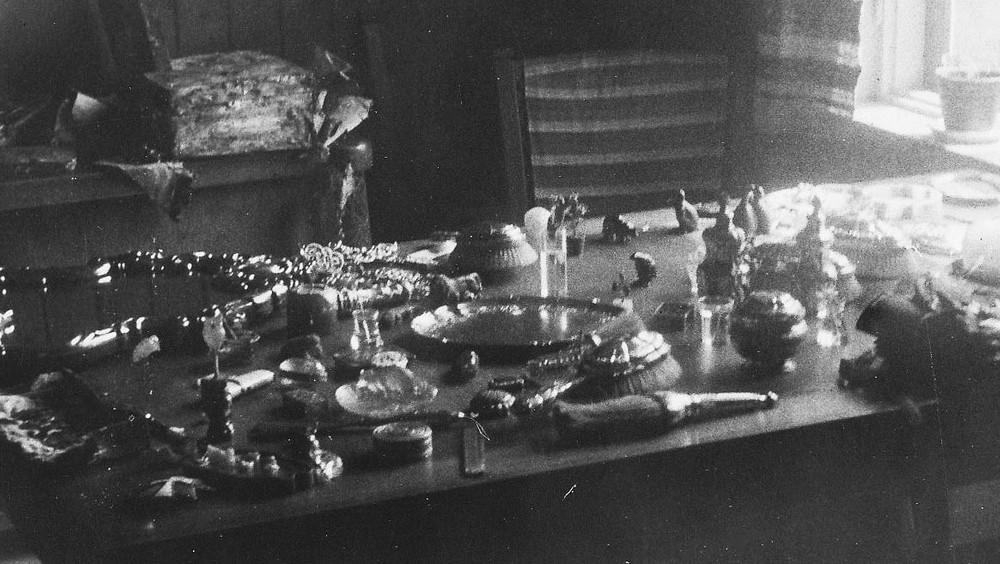
It has been 80 years since the German invasion of Norway. Hitler was looking for the Norwegian royal family, and for a while, he also tried to get the 3-year-old Prince Harald to rule the nation as a child king. The royal family managed to escape and lived in exile in the UK and the US for the next five years. The Royal Palace in Oslo was abandoned quickly; there was no time to take all the valuable assets that the Royal Family had.
The Royal Palace in Oslo was now empty, but it was still filled to the brim with valuable paintings, furniture, gold and jewellery. The Germans expelled many government employees from their offices in 1940 as they needed the offices for themselves. Carl Otto Løvenskiold was head of the Royal Court in 1940 and took command of the work to secure the royal assets. He was quick to offer a number of departments the use the Palace as offices. This lasted for two years.
By 1942, the Germans had begun robbing occupied nations of valuables. Quisling, Hitler’s puppet in Oslo, took an interest in the Royal Palace. However, when Quisling came to the castle in 1942, there was nothing left. All the valuable items, all the furniture, jewellery, silver, gold and valuable clothing were gone. What had happened to everything?
When it came to jewellery, gold and silver, this was something Carl Otto Løvenskiold took care of himself. The jewellery and gold were the very first things taken away from the Palace. In April 1940, in the middle of the night, Løvenskiold travelled to an empty Palace. He took all the jewellery and gold he came across and put them in five large brown suitcases that he owned. Then in the middle of the night, he took his car and drove deep into the forests north of Oslo.
In the woods north of Oslo, Løvenskiold had a cabin. The Løvenskiold family had owned large parts of this forest outside Oslo for hundreds of years. Løvenskiold was helped by his close friends and royalists Reidar Obel and Ivar Katnosa. The cabin was situated close to the lake Sandungen and had a newly built woodshed.
The three buried the five suitcases under the floor in the woodshed. Then they cut enough wood to stack the whole woodshed. This was to become the jewellery’s storage space for the next five years. Then they left the lodge and returned only occasionally to make sure all the wood was untouched and the jewellery as well.
On 8 May 1945, Norway was liberated when Germany surrendered. German soldiers in Norway gave up without a fight. It was now clear that the jewellery, gold and silver were no longer in danger. On the same day, Løvenskiold went up to his cabin to dig up the jewellery. He was assisted by the same people who had helped him bury the valuables five years before.
The five suitcases had broken down, but all the items were in relatively good condition. Full of soil and dirt, the items were transported to Oslo and back to the Palace. There they were thoroughly cleaned and put back where they had been when the Royal Family fled the Palace in 1940.
Only after the Royal Family had returned home did Løvenskiold update King Haakon on what he had done. For his efforts to preserve the Norwegian royal assets, Løvenskiold received The Royal St. Olav’s Order and a personal thank you letter from the King. This letter was framed and is still owned by the descendants of Løvenskiold. In this way, the Norwegian Royal Family’s jewellery, gold and silver were prevented from becoming a part of the Germans’ war booty.

